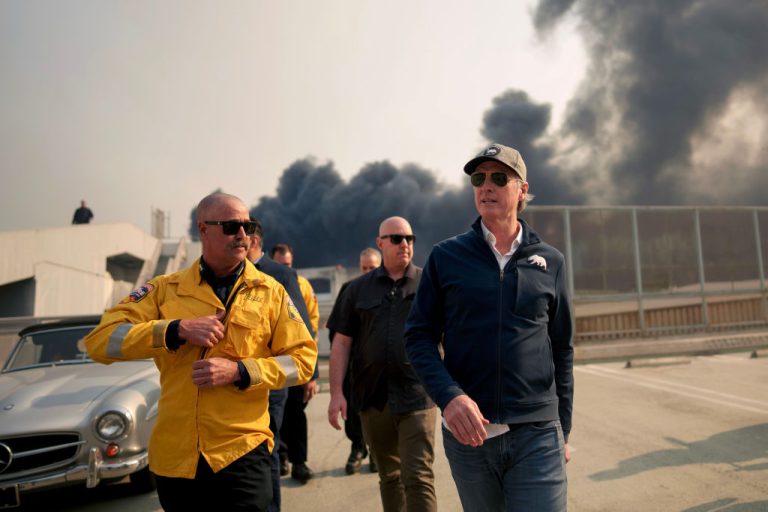Social Media Misinformation Fuels Wildfire Panic: California Grapples with Legal and Practical Solutions
The recent wildfires that ravaged Los Angeles brought to the forefront a disturbing trend: the rapid spread of misinformation on social media platforms. From AI-generated images of the Hollywood sign ablaze to unfounded rumors about firefighting techniques, false narratives proliferated online, adding another layer of crisis to an already dire situation. This incident coincided with Meta’s controversial decision to dismantle its fact-checking program, citing free speech concerns, leaving many questioning the role and responsibility of social media companies in curbing the spread of harmful falsehoods. The situation mirrors the challenges faced by election officials in recent years, grappling with the widespread dissemination of election fraud claims.
California, at the forefront of this battle, enacted a law last year requiring online platforms to swiftly remove AI-generated election-related misinformation. The law empowers politicians and election officials to sue non-compliant social media companies, despite federal protections generally shielding these platforms from liability for user-generated content. While proponents argue the law is narrowly tailored to protect election integrity, critics, including X (formerly Twitter), have challenged it as unconstitutional censorship. The ongoing legal battle over this pioneering legislation could set a precedent for other states seeking to regulate online misinformation.
However, the scope of California’s law is limited, focusing solely on election-related content. The Los Angeles wildfire incident highlighted the broader challenge of misinformation surrounding natural disasters and emergencies. Advocacy groups argue that social media companies are not adequately addressing this "crisis moment," exacerbating public anxiety and hindering effective emergency response. The unchecked spread of false information through algorithms that prioritize engagement, often at the expense of accuracy, underscores the need for more robust solutions.
While the debate over government regulation of online speech continues, some states are exploring alternative approaches. Colorado, for example, has focused on educational initiatives to combat misinformation, while other states have attempted, unsuccessfully so far, to restrict social media companies from deplatforming politicians. However, none of these efforts match the comprehensive approach of the European Union, which mandates that social media companies actively curb misinformation. Free speech advocates warn against government overreach, arguing that determining truth is a dangerous power to entrust to authorities.
In the absence of a clear legal framework, government officials have resorted to directly confronting online falsehoods. Governor Newsom’s "California Fire Facts" website, for example, debunks popular misinformation narratives about the wildfires. Similarly, FEMA has repurposed its hurricane rumor control website to address wildfire-related falsehoods. These "pre-bunking" efforts represent a proactive attempt to counter misinformation before it gains widespread traction.
Beyond official government responses, X’s Community Notes feature, a crowdsourced fact-checking system, offers a potential alternative. Users can add notes to posts containing misleading information, providing context and corrections. However, studies suggest that this system’s effectiveness is limited, with a significant portion of corrective notes never reaching users. Critics argue that relying on user goodwill is insufficient, especially in online environments often characterized by bad faith actors. Experts emphasize the increasing need for individuals to develop critical thinking skills and become their own "gatekeepers" of information.
The challenge of combating online misinformation requires a multi-pronged approach. Legislative efforts, such as California’s election misinformation law, face legal hurdles and First Amendment concerns. Educational initiatives aimed at promoting media literacy offer a long-term solution, empowering individuals to discern fact from fiction. In the immediate term, government agencies are resorting to direct engagement with misinformation, debunking false narratives and providing accurate information. While social media platforms experiment with community-based fact-checking tools, their effectiveness remains questionable. The ongoing struggle to balance free speech with the need to protect the public from harmful falsehoods will continue to shape the evolution of the online information ecosystem.


